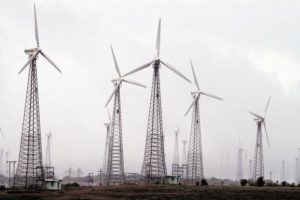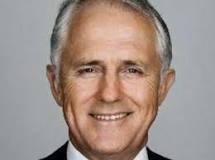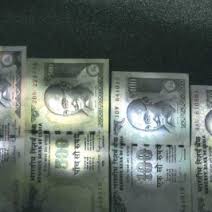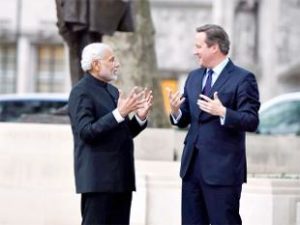
India added a record 5,400 megawatts (MW) of wind power in 2016-17, exceeding its 4,000MW target.
“This year’s achievement surpassed the previous higher capacity addition of 3,423MW achieved in the previous year,” the ministry of new renewable energy said a statement on Sunday.
Of about 50,018MW of installed renewable power across the country, over 55% is wind power.
In India, which is the biggest greenhouse gas emitter after the US and China, renewable energy currently accounts for about 16% of the total installed capacity of 315,426MW.
During 2016-17, the leading states in the wind power capacity addition were Andhra Pradesh at 2,190MW, followed by Gujarat at 1,275MW and Karnataka at 882MW.
In addition, Madhya Pradesh, Rajasthan, Tamil Nadu, Maharashtra, Telangana and Kerala reported 357MW, 288MW, 262MW, 118MW, 23MW and 8MW wind power capacity addition respectively during the same period.
At the Paris Climate Summit in December, India promised to achieve 175GW of renewable energy capacity by 2022. This includes 60GW from wind power, 100GW from solar power, 10GW from biomass and 5GW from small hydro projects.
It also promised to achieve 40% of its electricity generation capacity from non-fossil fuel based energy resources by 2030.
In the last couple of years, India has not only seen record low tariffs for solar power but wind power too has seen a significant drop in tariffs. In February, solar power tariffs hit a record low of Rs2.97 per kilowatt hour (kWh)and wind power tariff reached Rs3.46 kWh.
Even though wind leads India’s renewable power sector, it has huge growth potential. According to government estimates, the onshore wind power potential alone is about 302GW. But there are several problems plaguing the sector.
For instance, the government has been concerned about squatters blocking good wind potential sites, inordinate delays in signing of power purchase agreements, timely payments and distribution firms shying away from procuring electricity generated from wind energy projects. In January, the ministry held a meeting with the states to sort out these issues.
The ministry has also taken several other policy initiatives, including introducing bidding in the wind energy sector and drafting a wind-solar hybrid policy.
It has also come out with a ‘National Offshore Wind Energy Policy’, aiming to harness wind power along India’s 7,600 km coastline. Preliminary estimates show the Gujarat coastline has the potential to generate around 106,000MW of offshore wind energy and Tamil Nadu about 60,000MW.


